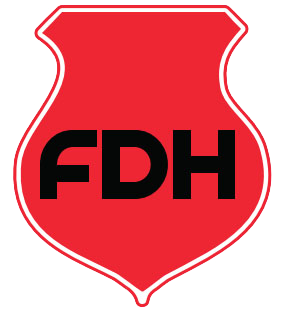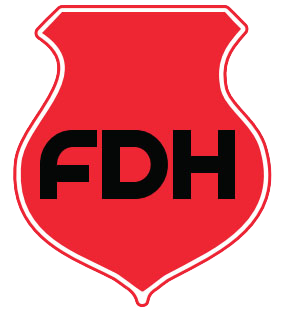The Bourgogne Wine Region
Wine in the Bourgogne region is everything!
It is at the centre of every town and village, and winemaking is a tradition that goes back thousands and thousands of years.
Wouldn’t it be an absolute shame to miss out on this historic produce?
Let this article educate you in all areas of the Bourgogne wine region, ultimately helping you select the right type of wine for you.
The Bourgogne Wine Region
The Bourgogne wine region is located in eastern France, just southeast of Paris.
It is a rather fragmented region, broken up into five distinct districts:
Chablis, Côte d’Or, Côte Chalonnaise & Mâconnais, and Beaujolais, which is 70 miles south of the other districts.
It has a unique terroir (the contribution of a specific place to the character of a wine), making it the perfect growing ground for both red and white wines.
The soil in the region is very varied from one end of the region to another, but also within a single area.
The general climate is continental, with fairly warm summers and cold winters.
About 22 million cases of wine are produced in the region annually, which is considered pretty small when compared with the production of the Bordeaux wine region, for instance.
Bourgogne is also lacking the large vineyards that other regions have. When there is a large vineyard in Bourgogne, it usually is run by a couple of owners, meaning that a variety of wines in type and brand can often come from the one vineyard.
The wine in this historic French region is considered the best that money can buy.
Of course, this means that they can also be some of the most expensive wines in the world.
It is its terroir which makes the wine so special and those who choose to drink the produce from the region can almost completely taste the region itself.
A Short History of the Bourgogne Wine Region
Winemaking in the Bourgogne region can be traced back to the Roman times, approximately 2,000 years ago.
Back then, wines were seasoned with herbs and the addition of honey was popular, and the Romans were fascinated by those who did not add water to their wine.
With the departure of the Romans, it was feared that winemaking would fall out of favour.
That was not to be as the monks took over and then went on to dominate the industry.
Changes in the traditional ways of winemaking came with the monks, most notably their forbiddance of adding water to the wine.
However, it was their impeccable note taking and record making that is considered their greatest contribution.
Following the monks were the merchants and businessmen who took Bourgogne wine to the rest of the world.
Today, sales of the region’s famous wine are divided about 50-50 between winegrowers and merchant negotiators.
What Defines a Bourgogne Wine?
To understand what defines a Bourgogne wine, it is important to know the breakdown of the wine produced in the region:
1% Grand Cru - e.g. Grands-Echézeaux, Montrachet
10% Premier Cru - e.g. Vosne-Romanée 1er Cru
37% Village Wines - e.g. Savigny-Les-Beaune
52% Regional Wines - e.g. Crémant de Bourgogne
Within this breakdown are the following definitions:
Regional Wines
Those defined as regional wines are light and fruity and are most often drank as sippers or aperitif wines.
These wines can be distinguished by its label (Bourgogne Rouge is red and Bourgogne Blanc is white).
Also available is the Crémant de Bourgogne sparkling wine.
Village Wines
Village wines are named after the towns near to where the grapes are sourced, for instance Givry and Santenay.
They are light and fruity like regional wines, but do tend to be a bit more complex.
Premier Cru Burgundy
There are special vineyards growing the produce for Premier Cru wines called climats.
The wines produced here are more intense than regional or village wines, probably due to the type of soil in which the grapes are grown.
Grand Cru Burgundy
Grand Cru Burgundy are perhaps the most famous of the Bourgogne wines, with Romanée Conti, La Tâche and Montrachet the most recognisable.
These bold wines are also the most expensive produced in the region.
Food Pairings with Bourgogne Wines
There are a plentitude of fine wines from the Bourgogne region which would perfectly compliment your meal, However, there seven bottles which just make everything a bit more special:
Crémant de Bourgogne: intended as a teaser wine. Perfect as an aperitif for those looking for an alternative to champagne.
Bourgogne Côte Chalonnaise: light and fresh and works well with oyster soup.
Chassagne Montrachet: another great match for oyster soup, but even better with tartar.
Pouilly-Fuissé: very tasty with brie and hard cheeses.
Bourgogne Pinot Noir: pairs wonderfully with cod but is also particularly tasty with charcuterie or cheese.
Mercurey: works well with grilled meat and fish.
Nuits-Saint-Georges: excellent with poultry dishes.
A more general guide to Bourgogne wine and food pairing is as follows:
Chablis White Wines: best served with seafood and fish dishes.
Cote de Beaune White Wines: ideal with lobster or any cream based dish. Also good with all kinds of cheeses.
Macon and Cote Chalonnaise White: preferable with simple fish dishes and salads.
Cote de Nuits Red: tasty with roasts or stews made from game or beef.
Cote de Beaune Red: best paired with poultry.
Cote Chalonnaise Red: grilled chicken or beef are best accompanying dishes.
Beaujolais: tasty with poultry or grilled fish.
Unable to travel to the Bourgogne region but would still like to taste its wine?
—> Then make an instant purchase at our online store!

